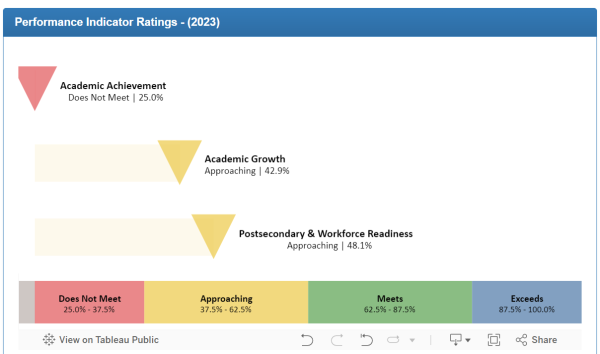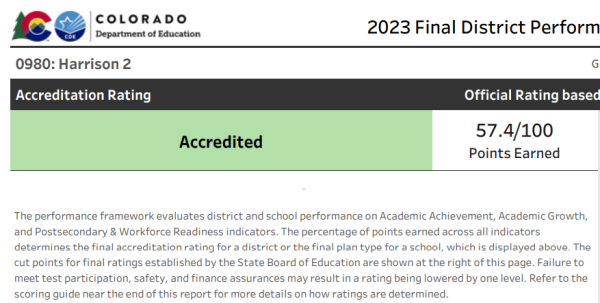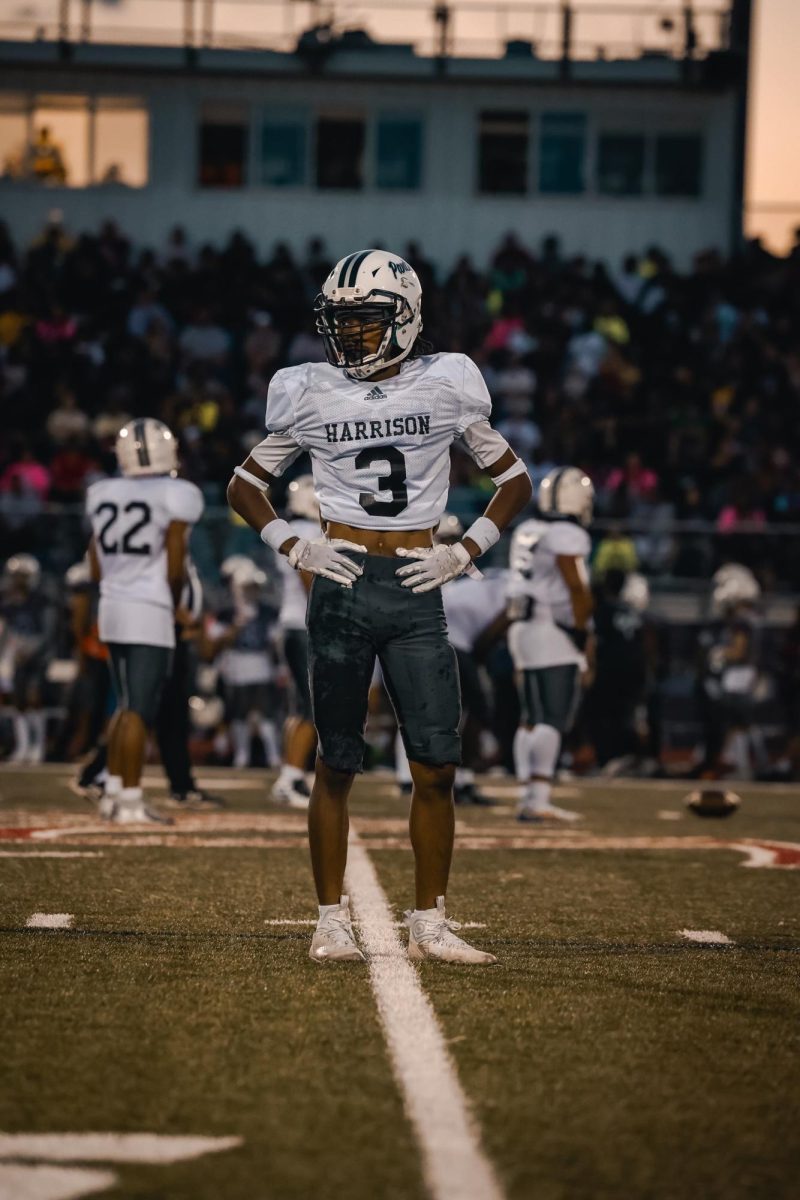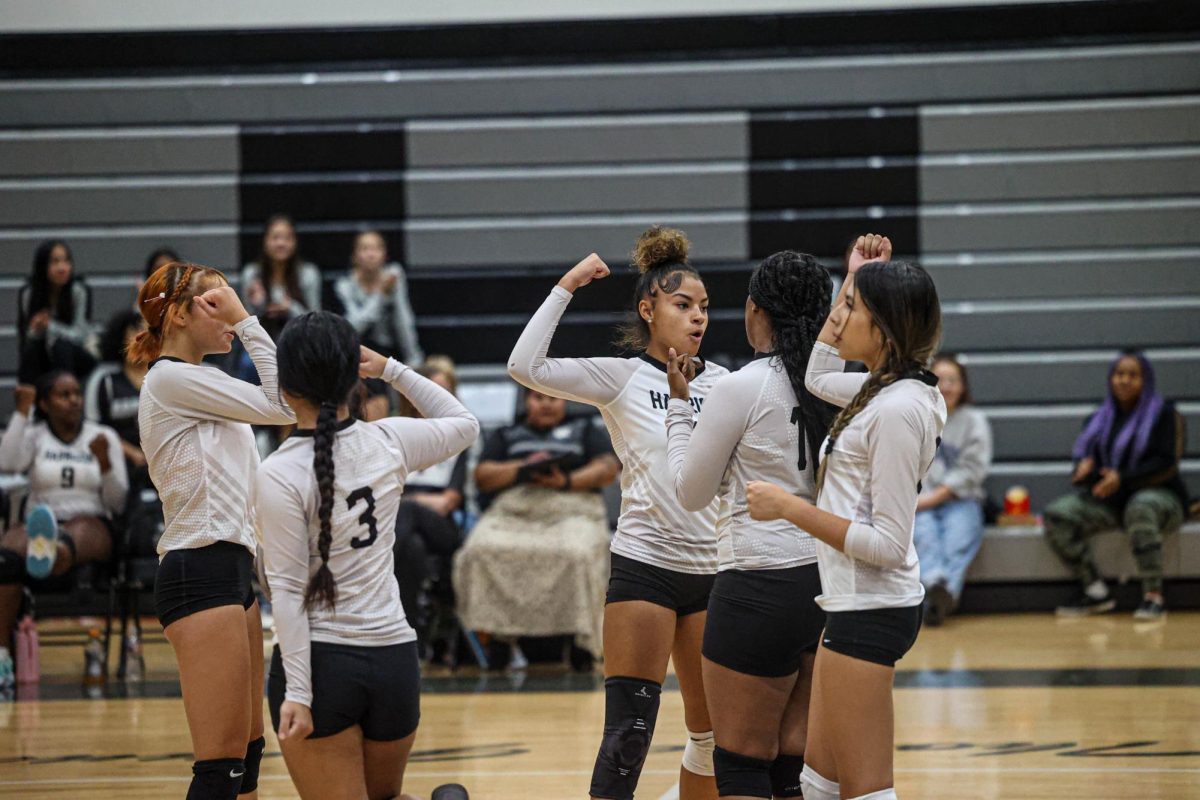Every year in August, Administrators and Principals across the state eagerly anticipate the previous year’s SPF ratings. It is a single word that determines where a district and school falls in the academic rating and accreditation process. That single word is more complex than it seems.
School Performance Ratings (SPF) and District Performance Ratings (DPF) are made up of several key factors that, when combined, paint a portrait of a school or district’s ranking in comparison to all other public schools in the state. The problem is that portrait might be a little blurred. No school is made up of the same kids, community, accessibility, or resources.

D2 has been ranked as ACCREDITED for five years in a row, and this year’s results show a small drop in overall score which led to an ACCREDITED WITH IMPROVEMENT PLAN overall rating. The rating is made up of several factors in areas of academic achievement and growth, postsecondary readiness, and workforce readiness. Scores are delivered to districts on multiple spreadsheets of data, divided by subpopulations of students and schools, with added rankings in participation and safety. Districts then use that data to determine their targeted goals for each school.
Dr. Birhanzel, HSD2’s Superintendent of Schools, says, “D2’s growth in math was a huge celebration [after] COVID-era dropped our math scores greatly, and D2 students continue to outperform like-peers across the state.” Rachel Laufer, our D2 Assistant Superintendent of Teaching and Learning, provided specific data in relation to school districts with D2’s closely-aligned population of students and income levels, and this picture is inspiring. D2 has always been at the top of performance when compared to the six districts in Colorado that mirror D2’s population. “Our scores to not reflect the amazing work our students do. I am chairing the state accountability task force and we are looking at this exact issue. We need to have measures that are equitable for all demographics along with the opportunity to tell our story besides a test score,” Birhanzel says. It is clear that if schools were compared to schools based on likeness, D2 would be the protagonist of the story.

And one chapter in that story includes Harrison High School. Harrison’s overall performance rating stayed steady at PRIORITY IMPROVEMENT for the second year in a row. A school’s performance is heavily weighted in SAT / PSAT state tests, and the performance on these tests varies greatly from student to student. “We know that the test itself was in a totally new format and structure,” says Molly McCann, an Assistant Principal at Harrison, “and after a year of exposure to the new format, I am excited about our gains.”
A drop in scores is not uncommon when students must adjust to such a big change—and moving to a strictly digital testing environment is a very big change. But Harrison’s scores didn’t drop in all areas. Harrison’s graduation rate also improved and Harrison’s English Language Learning population showed significant growth gains in English proficiency.
Despite celebrations, there are areas where we can move the needle and not just move into an IMPROVEMENT rating, but perhaps even a PERFORMANCE rating, says McCann.
Harrison has implemented significant interventions to target growth in PSAT / SAT scores, including weekly practice in ELA classes and math classes, and even targeted intervention to address our ELL’s SAT / PSAT learning needs. Laufer also is working to bring PSAT / SAT testing resources to schools to offer further support, especially for students who might not take traditional grade-aligned ELA or math classes and so miss out on the weekly practice in class.
“It is important for students to do their best on these tests to show how amazing Harrison High School really is. We have the targeted supports, but if students have ideas of how we can better support them, I encourage them to reach out,” invites Birhanzel.
In addition to achievement interventions, the counseling team is working diligently to improve graduation rates. Administrators added a Graduation Coach position in 2023 to address graduation gaps directly, and graduation rates have since improved.
Mindy Simons, another Assistant Principal at Harrison says, “We are improving and refining our work more every day. The SPF feedback allows us to play smarter, not harder. Success does not happen with just one winning move, but the right moves done over time.”
https://www.cde.state.co.us/schoolview/frameworks/indicators/0980/3806
To view full data, click link.








